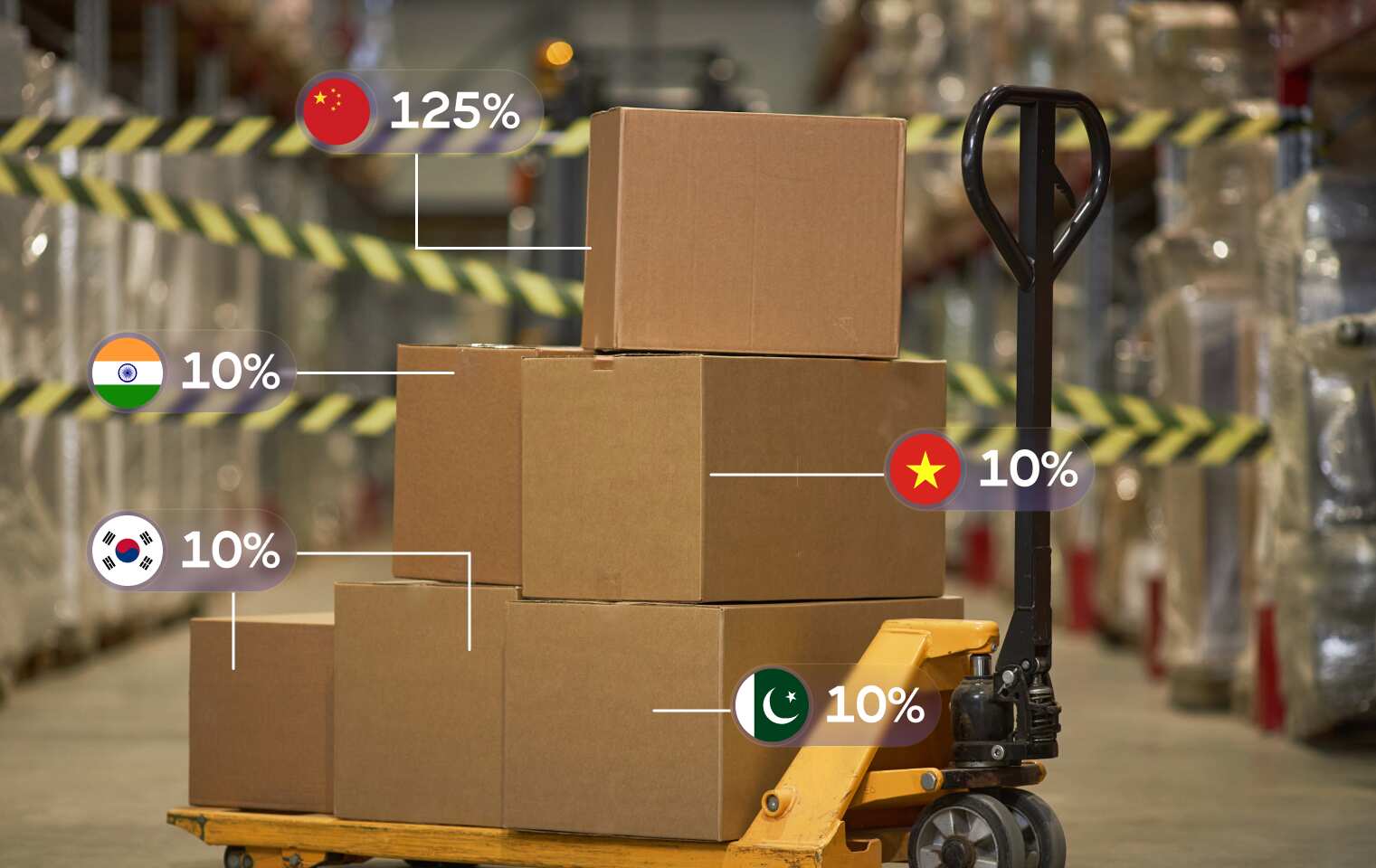
The global trade landscape is once again shifting—and if you sell into the U.S. or…
STEPHEN RUHLAND
4 mins read
7 mins read

Komal Puri
May 26, 2023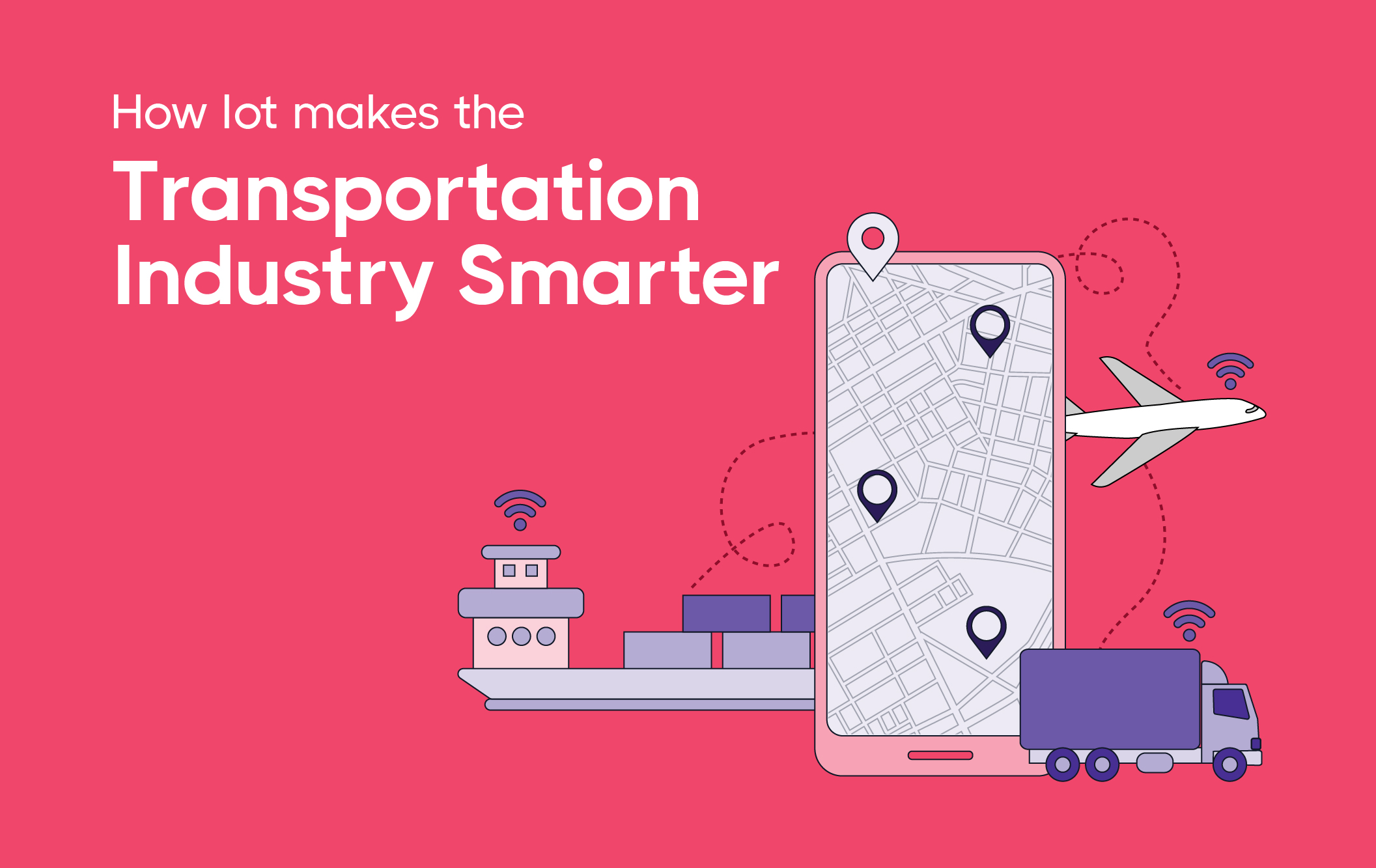
The logistics industry has come a long way from the days of scribbling on clipboards and hoping for the best. With the advent of technology, logistics services and solutions have evolved beyond recognition, and the Internet of Things (IoT) is leading the charge – creating quite the revolution.
By providing businesses with a treasure trove of data and insights, IoT has revolutionized supply chain management and made logistics more efficient than ever before.
In this article, we'll take a closer look at the latest trends of IoT in the logistics world and explore how exactly it's changing the game with smart technology.
Did you know that the number of IoT devices in use worldwide is expected to reach 30.9 billion by 2025? This revolutionary system consists of a network of interconnected devices, sensors, and software that communicate with each other over the Internet.
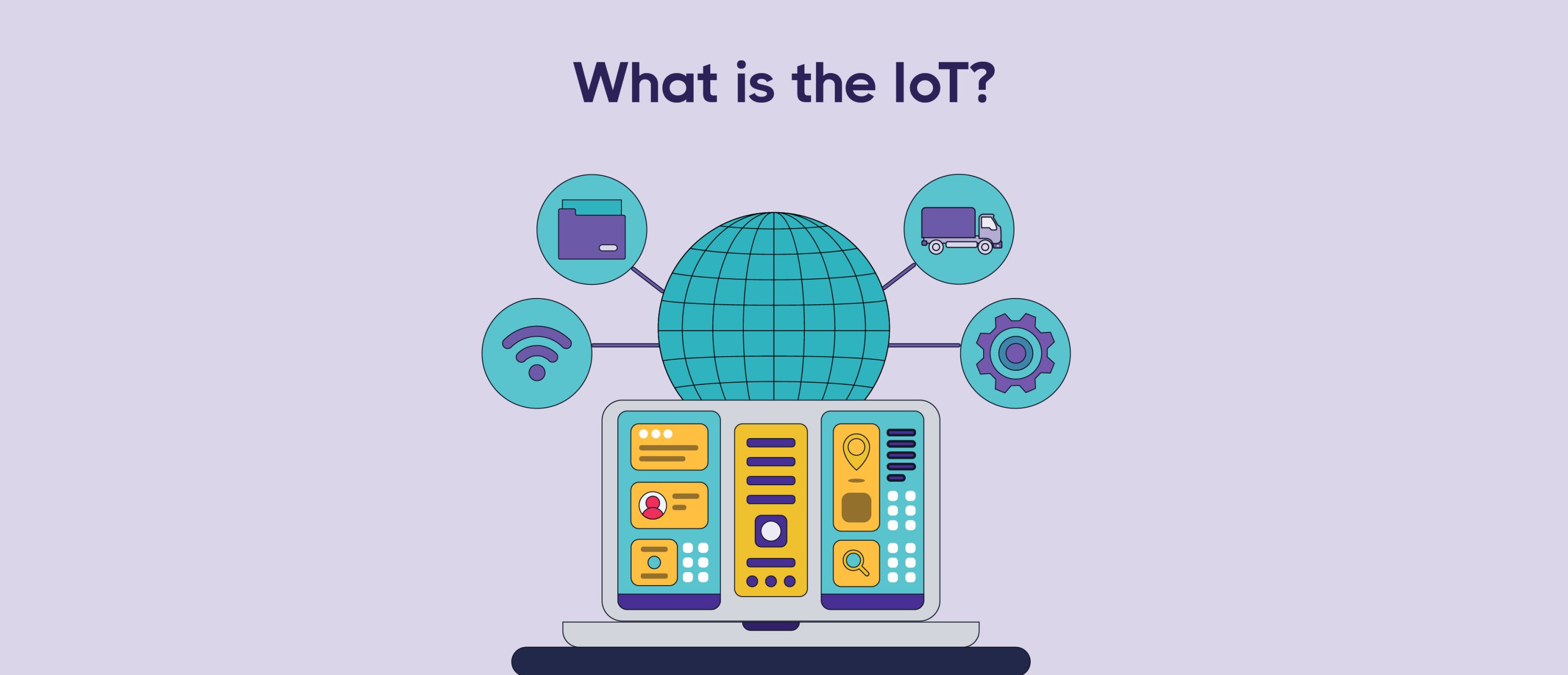
These devices can range from simple sensors to complex machines, and they are capable of collecting and transmitting data.
With the ability to collect and analyze vast amounts of data, IoT technology provides businesses with valuable insights that can be used to improve business processes and decision-making.
According to a report by McKinsey & Company, IoT-enabled logistics can help improve supply chain efficiency by up to 30% and reduce inventory holding costs by up to 75%.
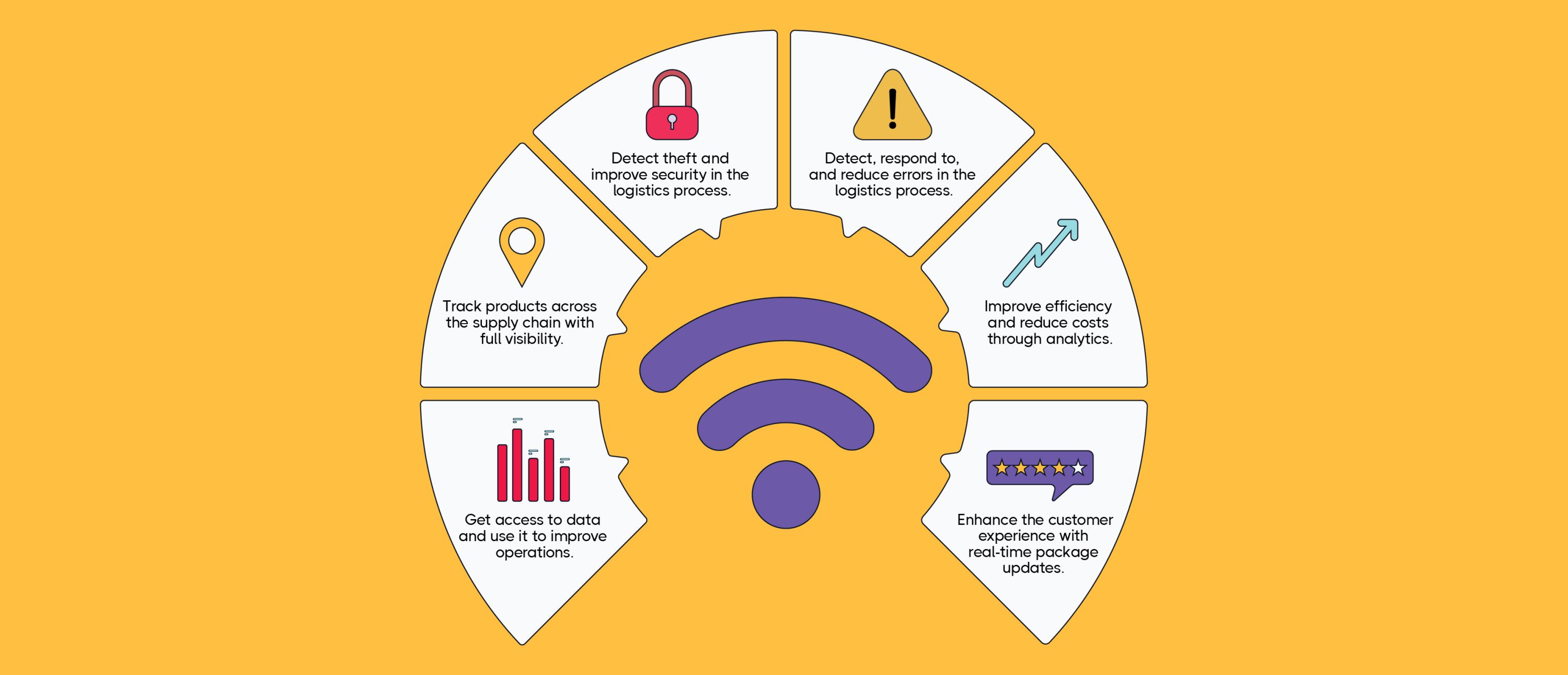
Knowing this, let's take a closer look at the range of benefits that IoT brings to the logistics industry.
One of the most significant benefits of IoT in logistics is that it provides businesses with access to a vast amount of data. This data can be used to gain insight into the logistics process and improve operations drastically.
For example, IoT sensors can be used to monitor the temperature of goods in transit, ensuring that they are stored at the correct temperature. This data can then be analyzed to improve the supply chain and ensure that products are delivered in the best possible condition.
IoT sensors can also be used to track products throughout the supply chain. This provides businesses with complete visibility over their products, enabling them to track goods from the factory to the customer.
This tracking can help businesses to identify any potential bottlenecks in the supply chain and optimize their logistics processes.
IoT sensors can also be set up to detect theft and improve security in the logistics process. For example, sensors can be placed on containers and trailers to monitor their location. If a container or trailer is moved without authorization, the sensors can send an alert to the business, enabling them to take action to prevent theft.
IoT sensors can also detect any errors in the logistics process in real time, allowing businesses to react quickly and reduce the impact of errors.
For example, these sensors are able to detect when a package is delivered to the wrong address or is on route to the wrong address, enabling the business to take action and retrieve or reroute the package to the correct address. This greatly reduces the risk of any potentially misdelivered packages, improving customer satisfaction.
IoT provides logistics managers with the ability to analyze data and gain insight into their operations. This data can then be utilized to enhance the logistics process by reducing cost and improving efficiency.
Logistics managers can then use this IoT data to optimize their inventory levels and reduce the risk of overstocking or stock shortages. For instance, by analyzing historical sales data, managers can identify trends in customer demand for certain products. They can then adjust their inventory levels accordingly, ensuring that they always have enough stock to meet customer demand without carrying excessive inventory that can tie up capital.
Another example of how IoT can improve efficiency is by enabling predictive maintenance. By analyzing sensor data from equipment such as trucks, warehouses, and handling equipment, logistics managers can identify potential maintenance issues before they become critical, enabling them to take proactive measures to avoid downtime and reduce repair costs.
With IoT, businesses can keep their customers in the loop by providing them with real-time updates on their package's status.
Customers are no longer having to anxiously wait for their packages to arrive. Instead, they can easily track their package's journey, knowing exactly when to expect it. This level of transparency and convenience greatly enhances the customer experience and reduces the number of customer inquiries related to delivery status.
While IoT provides businesses with a range of benefits, there are also some challenges to implementing this technology in the logistics industry.
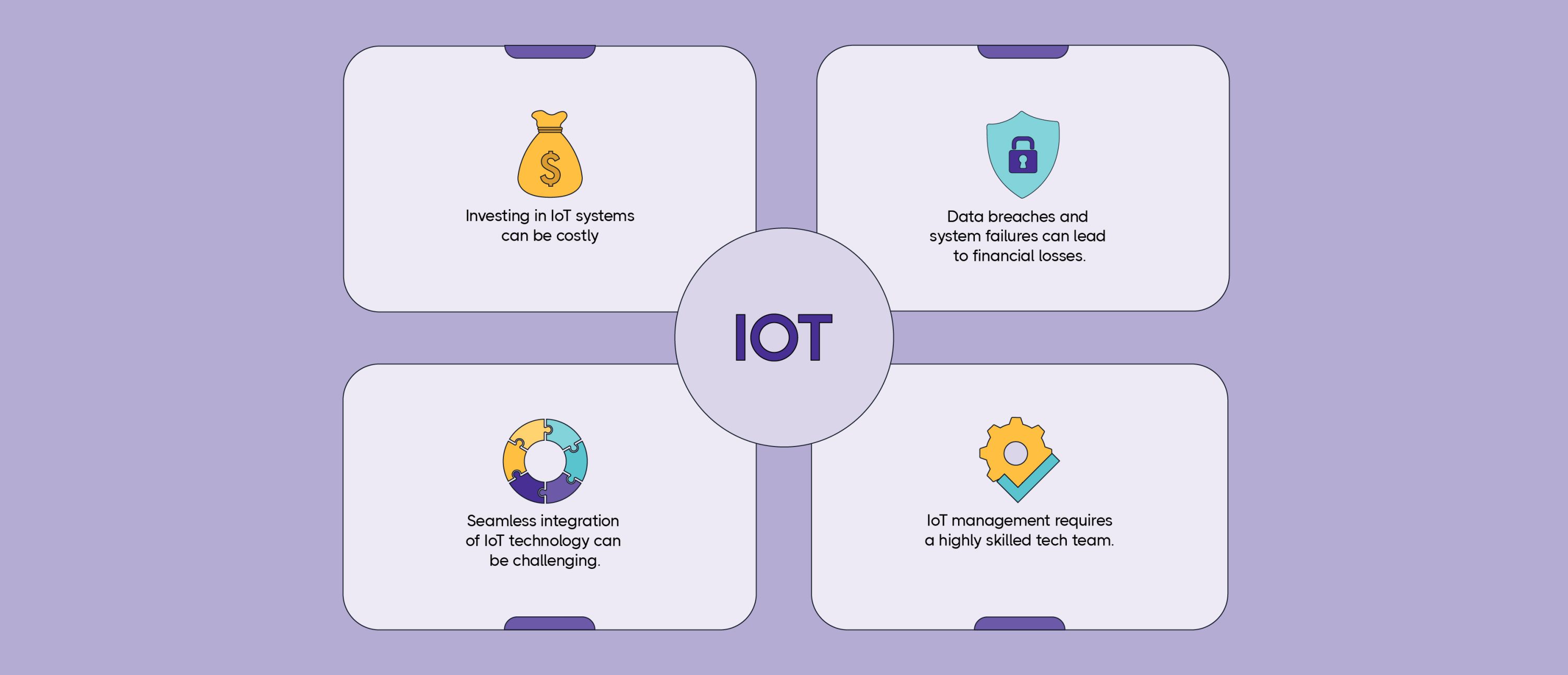
One of the biggest challenges is the cost of implementing IoT systems. IoT requires businesses to invest in sensors, software, and infrastructure, which can be expensive.
This cost can vary widely depending on the specific needs and complexity of the logistics operation. For example, a small-scale implementation with a limited number of sensors may cost around $50,000, while a large-scale deployment with hundreds of sensors and complex data analytics capabilities can cost upwards of $10 million.
These costs can be a major barrier for businesses looking to adopt IoT technology.
Furthermore, ensuring the security and reliability of IoT systems can be challenging. Gemalto found that only 10% of companies felt confident in the security of their IoT systems.
Data breaches and system failures can lead to significant financial losses and damage to a company's reputation. Therefore, it is crucial for businesses to invest in robust security measures and regularly update and maintain their IoT systems to ensure their reliability and security.
Another challenge is the complexity of the logistics process itself. The logistics process involves multiple stakeholders, including suppliers, manufacturers, distributors, and customers. Each stakeholder may use different systems and processes, making it more difficult to integrate IoT technology into the entire logistics process seamlessly.
Lastly, there is a great need for technical expertise when implementing and maintaining IoT technology. It's not just a plug-and-play situation; it requires a highly skilled and knowledgeable team to ensure that everything runs smoothly.
This means that businesses need to invest in hiring and training the right people to ensure that their IoT systems are implemented correctly and maintained effectively. Without the right technical know-how, businesses risk facing numerous challenges such as system failures, data breaches, and ineffective data analysis.
Incorporating MQTT authorization protocols can further safeguard IoT systems by ensuring that only authorized devices and users have access, thus enhancing overall system security and minimizing potential vulnerabilities.
Clearly, IoT technology is transforming the logistics industry by providing businesses with a vast amount of data and insights into their operations.
IoT has improved supply chain management and made the logistics process more efficient than ever before. However, it also comes with its challenges, including the cost of implementation, the complexity of the logistics process, and the need for technical expertise and knowledge.
Despite these challenges, the benefits of IoT in logistics services and solutions are undeniable. The ability to access data, track products, improve security, detect errors in real-time, and improve efficiency is just the beginning of what IoT can offer.
As technology continues to evolve, we can expect even more innovations in the logistics industry, which will further revolutionize the way we think about logistics and supply chain management.
Here at eShipper, we are ready to embrace these changes and advancements head-on, while also keeping these challenges top of mind.
Together, we can take advantage of the evolving IoT world and create a streamlined operation that keeps up with the times. Jump on the revolution with us :)